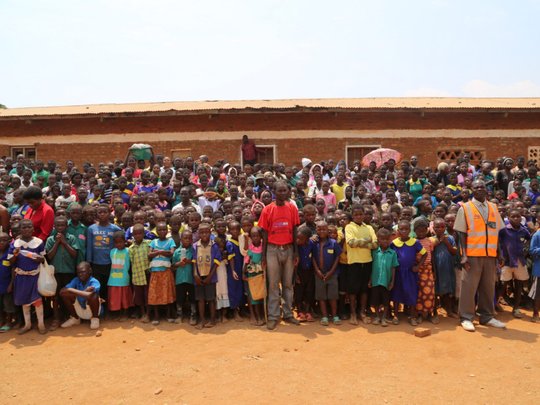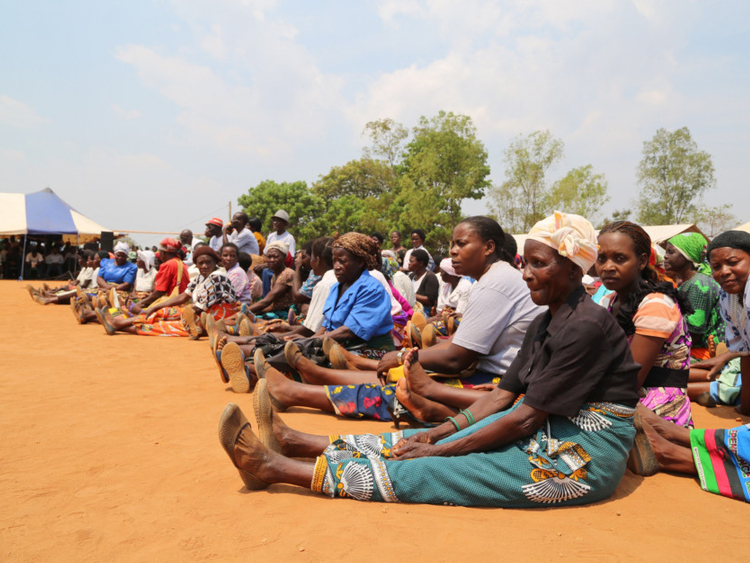
Thyolo district, Malawi: On the dusty red earth of a schoolyard in a remote Malawi village, around 3,000 children are waiting. Bright smiles mixed with curious gazes are fixed on a group of government officials, aid workers and reporters.
‘I am a girl, I am not a bride,’ reads a handwritten sign, held up by two schoolgirls. Another sign reads: ‘Education is my right too.’
As the faces of the surprised — and sometimes puzzled — children reveal, this is no normal school day.
The crowd is here to mark the official launch of an education programme for what aid organisations believe are some of Malawi’s most disadvantaged: school-aged girls.
In the country where half the population of 17 million live below the poverty line, disease, a lack of infrastructure, and deep-set social issues go hand in hand.
In many areas of the country, girls marry at a very young age. On average, girls in rural districts first married at the age of just 17.8, government statistics from 2002 show.
Coupled with a large number of out-of-wedlock pregnancies, and one of the world’s highest birth rates, school girls seem to be some of the country’s most vulnerable people.
But help is at hand, thanks to multiple foreign aid organisations. One of these is Dubai Cares, which since December has funded, planned and monitored a support programme for schoolgirls, in coordination with a local non-profit, the Creative Centre for Community Mobilisation.
The programme aims to reach 11,000 schoolgirls in 1,200 villages in the remote Thyolo district, an hour’s drive from the nearest city on dusty, uneven dirt roads.
Aid officials believe that by helping teachers deliver better education, including spruced-up English language training, and by teaching village communities to safeguard the future of their girls, the programme can one day be replicated across the country.
Yet, there are still two years of funding and monitoring left before the scheme can be deemed a success — and there are plenty of obstacles.
Strapped for cash
Heavily dependent on aid agencies, Malawi’s cash-strapped government provides free primary school education for everyone. Even then, just 57 per cent of girls in Malawi complete primary school, according to Unesco.
The problems seem to worsen as the children begin secondary school.
Secondary schoolteacher Gertrude Shabani, who works in one of the district’s schools, has seen the high dropout rates first hand.
Out of around 400 girl pupils, 50 have left the school this year. Teen pregnancy, early marriages and poverty were the main factors, she says.
“These problems are forcing them to leave school.”
But secondary schools cost money — and in the Thyolo district, where 85 per cent of people live in poverty, and family sizes are large, even seemingly tiny sums can be hard to pay.
“In our village, it is difficult to find the school fees,” says Jane Lingioome, a 16-year-old girl who aspires to be a nurse. At her secondary school, fees total Dh77 per year — up from just Dh23 a few months ago. Boarding schools can cost far, far more.
Distant dreams
Every day, Lingioome is just one of countless Malawian children who have to spend hours walking to and from distant schools.
She walks a total of 20 kilometres a day, and with no electricity at home, there’s not always enough daylight for more studies.
Another schoolgirl, Modester Chataika, has seen five of her friends drop out from school.
“Some were forced due to poverty, others got married because they were forced by their parents,” she says.
Despite many of her peers having their education cut short, Chataika, 17, says she won’t give up on her dream: to become a journalist.
“I just feel good when I see people reading newspapers and (watching) television.”









